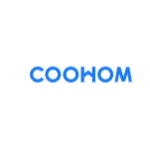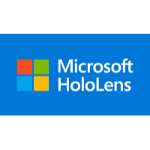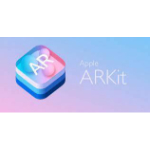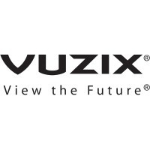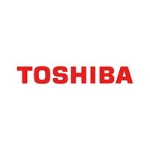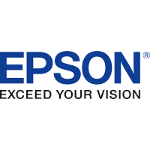List of Best Augmented Reality Software
Showing 10 of 43 productsCoohom is a software that has taken the interior design industry by storm. With its user-friendly interface features, Coohom has become a go-to choice for designers, architects, and homeowners looking to create stunning and realistic 3D designs. Say...Read Coohom Reviews
Face Filters SDKis a revolutionary software that allows you to easily integrate advanced face filters and effects into your applications. With its user-friendly interface and customizable options, this SDK offers endless possibilities for enhancing u...Read Face Filters SDK Reviews
BroadcastAR is a software that brings life to your ideas with its immersive augmented reality experiences. With its advanced technology, BroadcastAR allows you to interact with virtual objects in the real world, creating a truly magical and unforgett...Read BroadcastAR Reviews
Microsoft HoloLens 2 is a mixed reality device that blends the digital and physical worlds seamlessly. With its advanced technology interface, HoloLens 2 opens endless possibilities for innovation and creativity in various industries. Experience a wh...Read Microsoft HoloLens 2 Reviews
Google ARCore is a software that brings augmented reality experiences to mobile devices. It allows developers to create immersive and interactive AR applications that blend the physical and digital worlds seamlessly. With ARCore, users can unlock end...Read Google ARCore Reviews
Apple ARKit is a augmented reality development platform designed for iOS devices. With its advanced technology and seamless integration, ARKit allows users to experience immersive augmented reality experiences like never before. Whether for gaming, e...Read Apple ARKit Reviews
Vuzix Blade is a and versatile smart glasses that enhance your everyday with augmented reality technology. With its sleek design features, Vuzix Blade offers a seamless integration of digital information into the real world, transforming the way we i...Read Vuzix Blade Reviews
Dynaedge is a latest in innovative and versatile software solutions. With its advanced features and user-friendly interface, Dynaedge offers a seamless experience for businesses and individuals alike. Empower your operations with Dynaedge and stay ah...Read Dynaedge Reviews
Visteon is a global leader in automotive technology, providing innovative solutions and integrated systems that transform the driving experience. With a passion for pushing the boundaries of whats possible, Visteon is at the forefront of creating imm...Read Visteon Reviews
Epson Moverio is a companion for all your digital needs. With its state-of-the-art technology and user-friendly design, it allows you to immerse yourself in a world of endless possibilities. Whether for work or play, the Epson Moverio enhances your e...Read Epson Moverio Reviews
- What Is Augmented Reality Software?
- Top Reasons Why Businesses Need Augmented Reality Software?
- What Are the Top Key Features of Augmented Reality Software?
- What Are the Top Benefits of Augmented Reality Software?
- What Are the Steps to Choose the Right Augmented Reality Software?
- What Are the Types of Augmented Reality Software for Different Industries?
- What Are the Technology Trends for Best Augmented Reality Software?
- What Are the Deployment Options for Augmented Reality Software?
What Is Augmented Reality Software?
Augmented reality software refers to a software application that enriches an individual's perception of the physical environment by integrating digital components. The addition of information to the user's field of vision serves to enhance their understanding of their immediate environment by introducing new contextual elements.
One prominent illustration of the best AR software is sometimes referred to as "mixed reality," when digital things are projected to coexist with the physical surroundings for users to perceive.
The range of possible elements encompasses textual content, visual representations, audiovisual materials, or dynamic three-dimensional simulations that offer interactive engagement. Augmented reality (AR) has the potential to facilitate the presentation of a virtual tour within a museum or provide informative guidance at various tourism destinations.
Furthermore, this technology has the potential to be utilized for the purpose of delivering product presentations or educational lectures. AR augmented reality software also finds numerous applications within the industrial sector, including the training of personnel in equipment maintenance and assisting technicians in diagnosing malfunctions.
Given the multitude of potential applications, Top augmented Reality platfroms present an intriguing domain worthy of investigation. Through the integration of physical reality and digital components, AR augmented reality software provides a distinctive encounter characterized by interactivity and captivation.
Top Reasons Why Businesses Need Augmented Reality Software?
1. Augmented reality technology offers consumers an enriched visual encounter that surpasses the level of engagement provided by conventional print, radio, or television advertisements.
2. AR augmented reality software has the capability to generate virtual three-dimensional (3D) versions of items, hence facilitating enhanced comprehension and visualization of products or concepts for individuals.
3. The best augmented reality platform has the capability to generate immersive experiences that enable individuals to engage with their surroundings through tangible interactions.
4. Top augmented reality platforms has the capability to overlay images, text, and graphics onto the physical environment, so offering a novel and engaging avenue for marketing and advertising to consumers.
5. AR augmented reality software has the potential to assist businesses in establishing a simulated retail environment, commonly referred to as a "virtual store," wherein customers may engage with items and services within a lifelike context.
6. Top AR software facilitates the integration of virtual reality into the retail experience, so establishing an engaging and interactive shopping milieu.
7. Augmented reality software has the potential to efficiently deliver essential product information to buyers by overlaying it onto the packaging of the product.
8. The best AR software has the potential to facilitate an engaging and dynamic training environment for employees, hence enhancing their learning efficiency and knowledge retention.
9. AR augmented reality software has the potential to facilitate the development of virtual tours for businesses, thereby providing prospective customers with a convenient means to gain comprehensive insights into a company's operations.
10. Top AR software has the potential to facilitate product assembly and repair instructions, enabling customers to swiftly grasp the operational mechanisms of a product and acquire the necessary knowledge to build or fix it.
11. Augmented reality software can be considered a great asset for sales teams, since it offers potential buyers a distinctive perspective to examine products.
12. AR augmented reality software has the capability to generate an immersive virtual demonstration of a product, thereby facilitating clients to engage with it in a manner that closely resembles reality.
13. Augmented reality software has the potential to enhance various aspects of logistics operations, including warehouse management, staff productivity, and delivery team efficiency. By leveraging AR technology, logistics professionals may access a comprehensive and interactive visualization of warehouse layouts, real-time stock levels, optimal routes, and other relevant information.
14. The best AR software has the potential to facilitate interactive online conferencing, thereby enabling remote stakeholders to actively participate in real-time conversations.
15. Augmented reality software has the potential to enhance customer service by facilitating prompt and tailored resolutions, eliminating the necessity of physically shipping products to clients.
What Are the Top Key Features of Augmented Reality Software?
1. 3D renderings: The utilization of augmented reality software enables individuals to generate three-dimensional objects, animations, and interactive images within their visual perception.
2. Location based services: AR software has the capability to offer location-based services, including but not limited to instructions, local businesses, and nearby attractions, by utilizing GPS tracking technology.
3. Image recognition: The utilization of top augmented reality platforms enables individuals to discern and categorize things or landmarks within their surroundings by means of object or picture recognition technologies.
4. Augmented reality games: The utilization of augmented reality software enables individuals to engage in gaming activities within their immediate surroundings, hence enhancing the level of immersion experienced during gameplay.
5. Context-aware applications: The utilization of the best AR software involves the extraction and analysis of data from the user's immediate surroundings, which subsequently enables the provision of pertinent information that is tailored to the user's specific situation.
6. User interface elements: The utilization of augmented reality software facilitates the integration of graphical user interfaces, including icons, widgets, and menus, into the user's visual perception.
7. Visual search: The utilization of augmented reality software enables users to visually identify objects and landmarks within their surroundings, hence enhancing the process of looking for products and services.
8. Text recognition: The utilization of top AR software enables the recognition of text in several languages and the identification of items or landmarks within the surrounding environment.
9. Virtual reality integration: The utilization of the best augmented reality platform facilitates the seamless incorporation of virtual reality technology within the user's tangible surroundings.
10. Wearable technology: The utilization of augmented reality software facilitates the integration of wearable technology, specifically smart glasses, to deliver amplified information and data.
What Are the Top Benefits of Augmented Reality Software?
1. Enables Enhanced Learning Experiences: The utilization of top augmented reality platforms facilitates enhanced user engagement with instructional resources, hence promoting active investigation. The integration of augmented reality into educational practices enhances the learning experience by facilitating the visualization of abstract concepts, hence enabling users to grasp these concepts more effectively.
2. Improved Visualization of Concepts: The utilization of augmented reality software allows for the overlay of sophisticated visual elements onto tangible things, hence facilitating the rapid and precise comprehension of various concepts by users. This analysis enhances comprehension of form, structure, and other significant attributes.
3. Enhanced Collaborative Experiences: The utilization of the best AR software presents a novel avenue for individuals to engage in collaborative endeavors. The interactive features of this system enable users to collaboratively construct a collective experience, thereby enhancing efficiency and fostering a climate conducive to creative ideation.
4. Increased Productivity: The utilization of the best augmented reality software allows individuals to efficiently retrieve information within various contexts, hence enhancing overall productivity. Furthermore, it aids in maintaining team organization by facilitating constant access to pertinent information.
5. Increased Engagement: Augmented reality software enhances the user experience by enabling users to engage with content in a more captivating and dynamic fashion. This enhances user intuitiveness by enabling them to fully leverage the capabilities of the technology.
What Are the Steps to Choose the Right Augmented Reality Software?
1. Identify your needs: Please delineate the precise challenges or potential areas of growth that your firm aims to tackle through the implementation of an augmented reality solution. Take into account the nature of the product or service provided by your firm, the target consumer segment you aim to cater to, and the prevailing market dynamics within which you operate.
2. Research available solutions: Conduct a comprehensive examination of the already accessible best augmented reality platform, evaluating the distinctive characteristics and advantages that each solution provides in relation to your individual requirements. It is imperative to give careful attention to the implementation of the solution in order to ensure scalability.
3. Consider user experience: CThe potential effects on user experience should be taken into account while implementing the augmented reality solution. Does the solution provide an interactive user experience? Does the subject matter need a period of time and effort to acquire the necessary knowledge and skills? To what extent do characteristics offer a level of specificity?
4. Evaluate pricing: Assess the financial implications associated with the adoption of augmented reality software. Are there any expenses related to the acquisition of hardware or software? Does a subscription-based solution exist? Do the pricing alternatives align with the financial constraints of your organization?
5. Assess technology integrations: Evaluate the extent to which the best augmented reality software seamlessly incorporates with pre-existing infrastructure and technologies. Are there potential compatibility concerns with the current hardware or software solutions?
6. Review provider reputation: Evaluate the standing of the provider that is giving the augmented reality solution. Is the provider known for having a favorable track record in terms of customer service? What is the approach employed by the customer service staff in managing consumer enquiries and feedback?
7. Test the solution: Conduct an evaluation of the augmented reality solution. Do the features exhibit a high level of intuitiveness and user-friendliness? Does the solution offer an improved experience from the standpoint of the customer? Is it capable of integrating with pre-existing technology solutions?
8. Finalize decision: Conclude the determination regarding the selection of the augmented reality solution to be employed. In order to arrive at the optimal selection for your firm, it is imperative to consider all of the variables that have been previously delineated, including pricing, user experience, capability, and integration.
It is imperative to consider that the decision should effectively cater to the requirements of your firm while simultaneously delivering a valuable client experience.
What Are the Types of Augmented Reality Software for Different Industries?
There exists a diverse range of best augmented reality software applications that are tailored to meet the needs of different sectors. The subsequent illustrations present a sequence wherein the industry is initially indicated, succeeded by the corresponding category of best augmented reality platform.
1. Retail: The utilization of virtual try-on and augmented fitting room services.
2. Healthcare: The utilization of medical imaging techniques and AR augmented reality software in surgical simulators.
3. Military: Heads-up displays, target recognition, three-dimensional mapping, and mission simulations are some of the key technological advancements in the field.
4. Manufacturing: The utilization of assembly line guidance systems, interactive maintenance support, and guided assembly tutorials has become increasingly prevalent in various industries.
5. Education: The utilization of interactive visualizations, augmented whiteboard systems, and hologram-based learning environments has become increasingly prevalent in academic settings.
6. Tourism: The provision of interactive guides and virtual tours for various destinations.
7. Entertainment: The utilization of augmented reality in the context of gaming and simulations.
8. Automotive: The utilization of virtual showrooms and interactive product previews has become increasingly prevalent in contemporary business practices.
What Are the Technology Trends for Best Augmented Reality Software?
The current technical advancements in the best augmented reality software pertain to robust development platforms that facilitate the production of immersive and interactive augmented reality encounters.
In terms of software development, tools such as Unity and Unreal Engine offer robust capabilities for game creation, including the integration of real-time 3D content and supplementary functionalities like voice and gesture detection.
Furthermore, the proliferation of mobile devices and advancements in hardware technology have facilitated the expanded utilization of AR augmented reality software, encompassing enhancements in both hardware capabilities and software applications. The advent of computer vision and machine learning technologies has facilitated the development of augmented reality experiences that are increasingly sensitive and precise.
What Are the Deployment Options for Augmented Reality Software?
The deployment of augmented reality software might vary based on the intended goal and the desired user experience. AR software can be implemented through a web browser for the purpose of web-based applications.
The utilization of a web-based augmented reality platform is necessary for the implementation of a system that accommodates three-dimensional (3D) material. This platform should include the capability to track markers or employ computer vision-based recognition techniques.
One possible illustration is an augmented reality software encounter on a webpage executed through the utilization of a library such as AR.js or the 8thWall platform. In the context of mobile applications, top augmented reality platforms can be implemented through two primary approaches: the utilization of a native iOS or Android application, or the adoption of a cross-platform solution like a Progressive Web App (PWA).
One prominent mobile augmented reality software that has widespread popularity is ARKit, developed by Apple. This platform empowers developers to design and implement interactive experiences specifically tailored for iOS devices. Custom augmented reality solutions can be designed to cater to the special requirements of enterprise-level projects.
These solutions can be deployed on dedicated hardware to ensure optimal performance and functionality. This process entails the utilization of specialized engines and software libraries, such as Unity 3D or Unreal Engine, in conjunction with the deployment of applications on computing hardware of industrial-grade quality.
